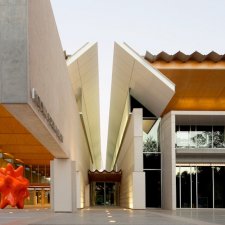- About us
- Support the Gallery
- Venue hire
- Publications
- Research library
- Organisation chart
- Employment
- Contact us
- Make a booking
- Onsite programs
- Online programs
- School visit information
- Learning resources
- Little Darlings
- Professional learning
Matthew Flinders (1774–1814), navigator, entered the British navy at the age of fifteen, served with Captain Bligh on the voyage to Tahiti and fought on the Bellepheron. At twenty he sailed for Sydney on the same ship as surgeon George Bass, with whom he later made his first exploratory excursions in New South Wales, and with whom, in 1798–1799, he proved Van Diemen’s Land to be an island. Having returned to England, he set out again in 1801 on the Investigator, reaching Cape Leuwin, WA in December. Mapping the entire southern coast, he arrived in Port Jackson in May 1802. On 22 July he headed north, making detailed surveys of Queensland’s coastline and islands, inching through the Torres Strait and the Gulf of Carpentaria on the increasingly unseaworthy Investigator. With him was Bungaree. By way of Western Australia, they limped into Port Jackson on 9 June 1803. A few weeks later Flinders sailed for England as a passenger on HMS Porpoise to secure a suitable ship to continue his explorations. Porpoise struck a reef and was lost, but Flinders navigated its cutter more than 1127 km back to Port Jackson and its crew was saved. In December 1803, returning to England on the ramshackle Cumberland, Flinders was forced to take port in Mauritius. There, he was detained, under suspicion of being an English spy, until 1810. Having returned to England at last, Flinders wrote up his findings under the title A Voyage to Terra Australis. The day after its publication, he died. His grave, the whereabouts of which was long a mystery, was discovered beneath Euston Station, London, in January 2019 during archaeological surveys pending construction of a high-speed railway.
Collection: National Portrait Gallery
Purchased 2014



On one level The Companion talks about the most famous and frontline Australians, but on another it tells us about ourselves.



Visit us, learn with us, support us or work with us! Here’s a range of information about planning your visit, our history and more!



We depend on your support to keep creating our programs, exhibitions, publications and building the amazing portrait collection!